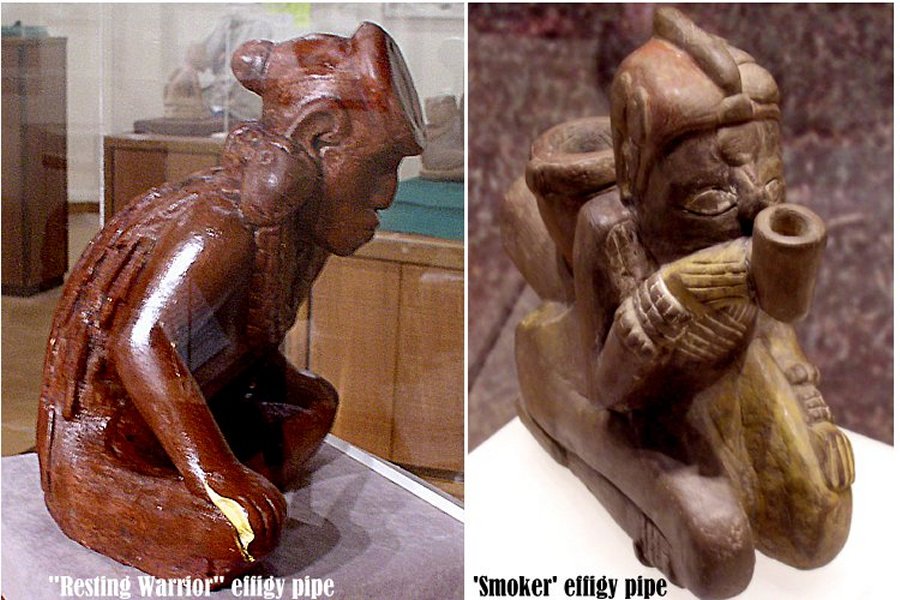Unsolved Prehistoric Enigma Of Sophisticated Spiro People And Their Mysterious Mounds
A. Sutherland - AncientPages.com - One of the most important archaeological discoveries in Oklahoma and the entire North America was the Spiro Mounds Site. The people of Spiro Mounds once ruled most of present-day America.
The site, which lies near the Arkansas River seven miles north of the town of Spiro, was occupied by various groups of people who camped on or near the Spiro area for at least 8000 years.
From 850 to 1450 AD, the location was permanently inhabited by Caddoan speaking Indians (the modern Kichai Wichita, Arikara Caddo, and Pawnee.).
The settlement began as a small farming village and became the intriguing, important and famous seat of the ancient Mississippian culture, in what later became the United States.
Craig Mound Biface. Image via lithiccastinglab.com
These people developed horticulture, elaborate ceremonies, mound-building and an iconographic writing system with over 60 different tribes, stretching from the Rockies to the Virginia Coast and from the Gulf Coast to the Great Lakes.
Spiro’s trading network was vast. According to Mississippian settlements like Cahokia and Spiro contributed to a vast trading network that covered the eastern half of what is now the U.S. and parts of what is now the Western U.S. as well.
See also:
Buhl Woman Of Idaho: One Of The Oldest Skeletons In North America
Etowah Indian Mounds: A Legacy Of The Ancient Mississippian Culture
Bighorn Medicine Wheel: Sacred Site And Ancient Solar Observatory
They built large, complex earthworks, which included eleven platform mounds and one burial mound in an 80-acre (0.32 km2) area on the south bank of the Arkansas River. The central part of the site were the nine mounds surrounding an oval, large and leveled central ceremonial plaza, which was used for important religious rituals.
Some of the most beautiful stone effigy pipes found at Spiro, including the famous "Grizzly Man" or "Kneeling Rattler" pipe, have shown they came from Cahokia, based on the material from which they were made. Image via Wikipedia
The largest platform mound - Brown Mound – served as a place of complex rituals, associated with the deaths and burials of Spiro's rulers. The Spiro inhabitants lived in a village closed to the ceremonial plaza and additionally, more than twenty similar villages were situated within five miles distance from the Spiro center and many other village sites – all representing the same culture – were found within a radius of 100 miles (160 km) away.
They created an important religious and political center of about 10,000 people that thrived along the Mississippi River and influenced the entire Southeast. The Spiro Mound center declined and was eventually abandoned by 1450 AD, although the city was continuously occupied for about 150 years.
Effigy pipes from Spiro Mounds Area. Image via wikipedia
The site remained unoccupied from A.D. 1600 until 1832.
In 1936, archeologists from the University of Oklahoma were able to excavate as much as possible from the Spiro site, which was exposed to major damage due to the looting of its artifacts.
In a cavity of the Craig Mound ("The Spiro Mound"), the only burial mound of the Spiro site, archaeologists excavated many artifacts made of wood, conch shell, and copper, including basketry, vegetal and animal fibers, woven fabric of lace, fur, and feathers.
The Spiro Mounds site has revealed many secrets; however, the reasons for the decline of the Spiro culture and abandonment of the site still remain a mystery.
Written by – A. Sutherland - AncientPages.com Senior Staff Writer
Copyright © AncientPages.com All rights reserved. This material may not be published, broadcast, rewritten or redistributed in whole or part without the express written permission of AncientPages.com
Expand for referencesMore From Ancient Pages
-
 How Saul, A Farmer Boy Became The First King Of Israel
Featured Stories | Jan 20, 2022
How Saul, A Farmer Boy Became The First King Of Israel
Featured Stories | Jan 20, 2022 -
 Submerged Wreck Of Mayan Slave Ship Identified By INAH Researchers
Archaeology | Sep 23, 2020
Submerged Wreck Of Mayan Slave Ship Identified By INAH Researchers
Archaeology | Sep 23, 2020 -
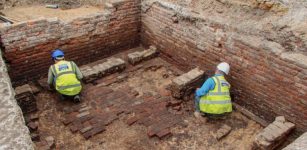 London’s Oldest Theater Red Lion Discovered Beneath Whitechapel
Archaeology | Jun 10, 2020
London’s Oldest Theater Red Lion Discovered Beneath Whitechapel
Archaeology | Jun 10, 2020 -
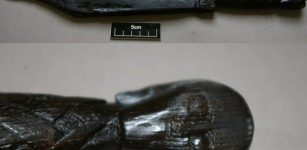 Extraordinary 1,000-Year-Old Viking Sword Discovered In Cork, Ireland
Archaeology | Sep 29, 2017
Extraordinary 1,000-Year-Old Viking Sword Discovered In Cork, Ireland
Archaeology | Sep 29, 2017 -
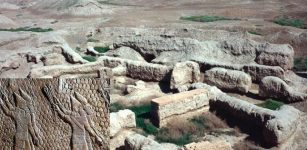 Lost Kingdom Of Mari – Once Important Commercial And Political Center Of Mesopotamia
Featured Stories | Jan 25, 2018
Lost Kingdom Of Mari – Once Important Commercial And Political Center Of Mesopotamia
Featured Stories | Jan 25, 2018 -
 Why Was The Medieval Town Of Wagrain Suddenly Abandoned 1,300 Years Ago?
Archaeology | Oct 7, 2024
Why Was The Medieval Town Of Wagrain Suddenly Abandoned 1,300 Years Ago?
Archaeology | Oct 7, 2024 -
 Ancient Roman Port Discovered Off The Syrian Coast
News | Feb 16, 2021
Ancient Roman Port Discovered Off The Syrian Coast
News | Feb 16, 2021 -
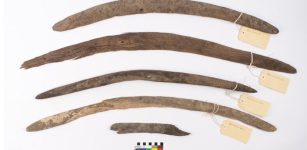 Rare Ancient Boomerang Collection Sheds New Light On Australia’s Past
Archaeology | Nov 4, 2021
Rare Ancient Boomerang Collection Sheds New Light On Australia’s Past
Archaeology | Nov 4, 2021 -
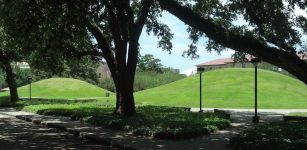 Mounds In Louisiana, North America Offer Insight Into Middle Archaic Lifestyles
Archaeology | Dec 2, 2022
Mounds In Louisiana, North America Offer Insight Into Middle Archaic Lifestyles
Archaeology | Dec 2, 2022 -
 2,000-Year-Old Altar Depicting Snake Figure Unearthed In Lycian City Of Patara
Archaeology | Oct 20, 2020
2,000-Year-Old Altar Depicting Snake Figure Unearthed In Lycian City Of Patara
Archaeology | Oct 20, 2020 -
 Descent Of Orpheus To Underworld Ruled By Hades
Featured Stories | Jan 14, 2018
Descent Of Orpheus To Underworld Ruled By Hades
Featured Stories | Jan 14, 2018 -
 Nimerigar: Mythological Race Of Little People Living In Wyoming
Featured Stories | Jun 7, 2017
Nimerigar: Mythological Race Of Little People Living In Wyoming
Featured Stories | Jun 7, 2017 -
 Unexpected Substance Found In Ancient Maya City May Have Arrived Through Distant Trade
Archaeology | Dec 2, 2024
Unexpected Substance Found In Ancient Maya City May Have Arrived Through Distant Trade
Archaeology | Dec 2, 2024 -
 Huginn and Muninn: Powerful Ravens Of Odin, Supreme God In Asgard In Norse Mythology
Featured Stories | Dec 7, 2017
Huginn and Muninn: Powerful Ravens Of Odin, Supreme God In Asgard In Norse Mythology
Featured Stories | Dec 7, 2017 -
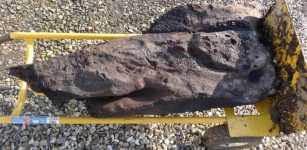 Surprising Discovery Of Oldest Decoratively Carved Wood In Britain
Archaeology | Jun 7, 2023
Surprising Discovery Of Oldest Decoratively Carved Wood In Britain
Archaeology | Jun 7, 2023 -
 3,000-Year-Old Fortress Built By The Mysterious Votadini Tribe Discovered On Top Of Arthur’s Seat
Archaeology | Sep 11, 2020
3,000-Year-Old Fortress Built By The Mysterious Votadini Tribe Discovered On Top Of Arthur’s Seat
Archaeology | Sep 11, 2020 -
 Nurarihyon: Powerful Demon Of Obscure Origin, Chief Of All Yokai
Featured Stories | Nov 6, 2024
Nurarihyon: Powerful Demon Of Obscure Origin, Chief Of All Yokai
Featured Stories | Nov 6, 2024 -
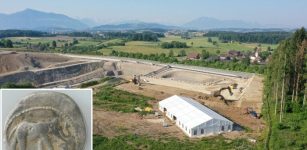 Why Are The 2,000-Year-Old Roman Walls Found In Switzerland An ‘Archaeological Sensation’?
Archaeology | Sep 15, 2023
Why Are The 2,000-Year-Old Roman Walls Found In Switzerland An ‘Archaeological Sensation’?
Archaeology | Sep 15, 2023 -
 Astrape And Bronte – Twin Goddesses Of Lightning And Thunder Carried God Zeus’ Thunderbolts
Featured Stories | Jan 22, 2019
Astrape And Bronte – Twin Goddesses Of Lightning And Thunder Carried God Zeus’ Thunderbolts
Featured Stories | Jan 22, 2019 -
 Mysterious Kaali Crater And The Holy Lake – Sacred Ancient Places In Estonia
Featured Stories | Jan 19, 2018
Mysterious Kaali Crater And The Holy Lake – Sacred Ancient Places In Estonia
Featured Stories | Jan 19, 2018




